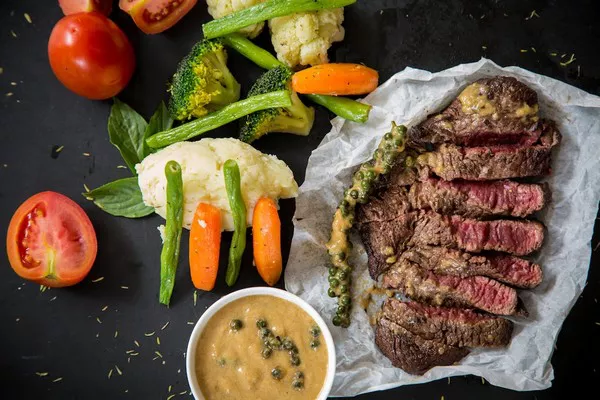In the world of food innovation, a new term has emerged: “hybrid meat.” But what exactly does this mean, and how does it impact food safety?
Hybrid meat is a novel concept that involves blending two distinct types of meat alternatives—cultivated meat (often referred to as cultured or lab-grown meat) and plant-based meat. To better understand this concept, let’s break down the components involved:
Cultivated Meat: This type of meat is produced in large stainless steel bioreactors using animal cells taken from live animals such as cows, pigs, or chickens. These cells are then cultured in a carefully regulated nutrient solution, allowing them to grow into genuine meat. Crucially, no animals are harmed or slaughtered in this process. It’s essential to note that this isn’t traditional farm-raised meat; instead, it’s created in controlled laboratory settings.
Recent developments in this field have seen regulatory approval granted for cultivated meat production, with companies like UPSIDE Foods gaining recognition for their “slaughter-free” chicken, which closely resembles conventional poultry in appearance and taste. UPSIDE Foods has even unveiled plans for a significant new facility near Chicago, marking a significant step in the commercial production of cultivated meat products.
While cultivated meat presents a promising alternative to traditional animal agriculture, it faces several challenges, including the need to establish extensive infrastructure and attract sufficient investments to reduce costs for consumers.
Plant-Based Meats: On the other hand, plant-based meats, also known as “meatless meats,” are created using ingredients such as pea or soy protein, fats, binders, and various natural or artificial flavors to mimic the taste and texture of traditional meat. These products encompass a wide range of items, from burgers and sausages to meatballs and chicken nuggets.
Plant-based meats have gained popularity due to their lower environmental impact compared to conventional meat. They typically require fewer resources, generate fewer greenhouse gas emissions, and use less land and water. Despite being more expensive than conventionally raised meat, they offer a more eco-friendly alternative.
The Emergence of Hybrid Meat: Hybrid meat represents a fusion of these two alternative meat sources—cultivated and plant-based. The primary motivation behind hybrid meat is to combine the benefits of both, potentially accelerating the adoption of meat alternatives. By blending plant and animal proteins, hybrid meat production could substantially lower costs, making these products more accessible to consumers.
Proteins like soy and pea, commonly used in plant-based meat, are produced on a massive scale at low costs. In contrast, cultivated meat requires ingredients like animal cells, amino acids, serums, fatty acids, sugars, salts, vitamins, and other components to grow the meat cells, which can be more expensive. The strategy behind hybrid meat is to leverage the affordability of plant-based protein sources to offset the costs of cultivated meat ingredients.
The Road Ahead: The development and widespread availability of hybrid meat products may take several years. Experts predict that it could be several decades before the majority of the world’s meat production adopts these alternatives. Factors such as building infrastructure, attracting investors, and reducing prices to match consumer preferences play a significant role in this timeline.
Furthermore, the transition from conventional meat to alternative proteins is influenced by consumers’ preferences, budget constraints, and environmental concerns. It’s important to recognize that while hybrid meat offers exciting possibilities, it won’t replace traditional meat overnight, especially given the growing global demand for meat products.
Food Safety Considerations: One critical aspect of hybrid meat is food safety. Advocates argue that bypassing traditional livestock farming can mitigate certain food safety risks associated with conventional meat production. The absence of animal slaughter reduces the chances of fecal contamination, E. coli, salmonella, and the transmission of diseases like swine flu and mad cow disease.
It’s worth noting that pathogens in conventionally produced meat are often responsible for food-related infections, highlighting the potential advantages of alternative proteins in ensuring food safety.
In conclusion, the emergence of hybrid meat—blending cultivated and plant-based meat—represents a significant innovation in the food industry. While it offers promise in terms of sustainability, affordability, and food safety, its widespread adoption will depend on various factors, including consumer preferences and the ability to scale up production. The transition to alternative proteins is a complex journey, but one that may ultimately contribute to a more sustainable and secure food supply.

